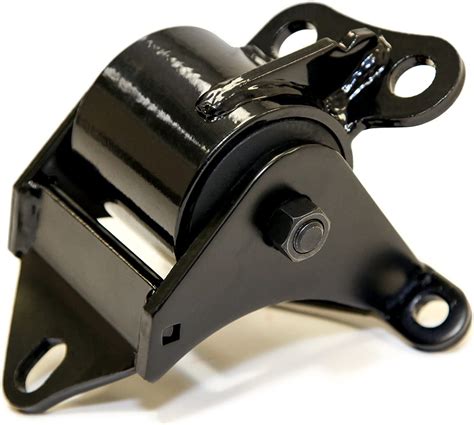Discover the role, importance, and signs of worn engine mounts. Learn how to replace and choose the right engine mounts for optimal vehicle performance.When it comes to optimizing your vehicle’s performance, one crucial component often overlooked is the engine mount. Specifically designed for the D16 engine, these mounts play a pivotal role in securing the engine and ensuring a smooth ride. In this blog post, we’ll explore the essential functions of engine mounts, their importance in maintaining vehicle integrity, and how to identify signs of wear and tear. As with any automotive component, knowing when to replace your engine mounts is key to preventing further damage and enhancing your driving experience. Additionally, we’ll guide you through the process of choosing the right engine mounts for your D16, ensuring that your vehicle runs as smoothly as possible. Whether you’re a seasoned mechanic or a novice car enthusiast, understanding the nuances of engine mounts can help you achieve optimal performance and reliability in your ride.
What are engine mounts?
Engine mounts are crucial components in a vehicle’s construction, serving as the interface between the engine and the chassis while also absorbing vibrations produced during the engine’s operation, which helps in maintaining both stability and comfort within the vehicle. These mounts ensure that the engine remains securely attached to the vehicle frame, providing the necessary strength to handle the torque produced by the engine while also allowing for some degree of movement to avoid stress on various parts. A typical setup involves rubber or polyurethane materials that offer versatility in performance and durability, which effectively dampen vibrations and noise transmission from the engine to the passenger cabin.
Moreover, engine mounts come in a variety of configurations depending on the specific design and engineering of the vehicle, with different designs tailored to accommodate various engine types, dimensions, and layouts, ensuring that every car model has the right fit for optimal performance. The most common types include hydraulic, solid, and pneumatic engine mounts, each designed with unique characteristics to meet specific operational needs. For instance, hydraulic mounts are often preferred for quieter engines, as they utilize fluid to manage vibrations, while solid mounts are built to withstand higher loads and impacts, making them ideal for performance vehicles.
In summary, understanding what engine mounts are and their functionality provides valuable insight into automotive engineering and maintenance, as these components play a significant role in how well a vehicle performs and how comfortable it feels to drive, making them an essential subject of study for anyone interested in car mechanics and maintenance.
Importance of engine mounts
Engine mounts play a crucial role in the overall functioning of a vehicle, serving not only as a support system for the engine but also ensuring that the engine’s vibrations are effectively absorbed, thereby contributing to the vehicle’s comfort and stability during operation. Without engine mounts, the engine would not only experience undue strain and potential misalignment but could also lead to excessive noise and vibrations being transferred to the vehicle’s chassis, which could severely compromise the driving experience.
Moreover, the importance of engine mounts extends to the safety of the vehicle as well; if the mounts are worn or damaged, it can create a hazardous situation where the engine is not securely fastened, posing risks of engine displacement which can lead to catastrophic failures while driving. Additionally, keeping the engine mounts in optimal condition is essential for the prevention of costly repairs that can arise from neglect, given that faulty mounts can cause excessive wear on other components of the vehicle’s drivetrain, including the transmission and the exhaust system.
In summary, understanding the importance of engine mounts is vital for any vehicle owner, as these components are intrinsic not only for the performance and stability of the vehicle but also for the long-term viability of the engine and other related systems, underscoring the necessity of regular checks and timely repla
Signs of worn engine mounts
When it comes to the D16 engine mounts, identifying the signs of worn engine mounts is crucial for maintaining the overall integrity and performance of your vehicle, as defective engine mounts can lead to a plethora of issues including excessive vibrations, misalignment of the engine, and even damage to surrounding components.
One of the most noticeable signs of worn engine mounts is the presence of excessive vibration that can be felt inside the vehicle; this vibration occurs because the mounts are no longer capable of absorbing the engine’s natural oscillations, translating engine movement directly to the vehicle’s chassis, which can lead to discomfort and potential fatigue while driving.
Additionally, if you experience unusual clunking or banging noises when shifting gears or accelerating, this could indicate that the engine is not properly secured due to worn mounts; as the engine moves more freely without the proper restraints, it can hit against other components of the vehicle, which may not only damage these parts but also lead to more severe consequences such as engine misalignment or even damage to the transmission.
In conclusion, being aware of the subtle signs like leaking mount fluid, vibrations felt in the driver’s seat, and unnatural noises during operation can help you spot problems early on, allowing you to address worn D16 engine mounts before
Replacing engine mounts
Replacing engine mounts is a critical maintenance task that ensures the engine is securely fastened to the vehicle’s frame while also isolating vibrations and noise generated by the engine from the rest of the vehicle, thus enhancing the overall driving experience and prolonging the life of various components attached to the engine.
When contemplating the replacement of engine mounts, one must first identify the symptoms indicative of worn mounts, such as excessive vibration felt in the cabin, misalignment of the engine or transmission, or unusual noises during acceleration or deceleration, and upon recognizing these symptoms, it is advisable to consult a professional mechanic to ensure a comprehensive assessment is conducted, which may include an inspection of the vehicle’s alignment, suspension, and drivetrain systems.
The actual replacement process typically involves lifting the vehicle securely, removing any components obstructing access to the mounts, physically removing the old mounts, preparing the new mounts for installation, and meticulously ensuring that all bolts and fasteners are torqued to the manufacturer’s specifications, as improper installation can lead to further issues down the line, such as premature wear or even failure of the new mounts.
Choosing the right engine mounts
When it comes to selecting the right engine mounts, it’s essential to understand the specific requirements of your vehicle, as well as the different types of engine mounts available on the market, including hydraulic, solid, and polyurethane mounts, each presenting its own set of advantages and disadvantages that need to be thoroughly weighed against your driving style and vehicle performance needs.
Additionally, the material composition of the engine mount plays a crucial role in its longevity and functionality, meaning that opting for a quality manufacturer that offers mounts made from durable materials can significantly reduce the risk of premature wear, which not only leads to a smoother ride but also minimizes unwanted vibrations and noise that could otherwise disrupt your driving experience.
It is also important to consider whether your vehicle requires OEM (Original Equipment Manufacturer) or aftermarket parts, as OEM parts are typically designed to meet specific standards set forth by the vehicle manufacturer, whereas aftermarket parts might offer variations that could enhance performance or reduce costs; thus, a detailed assessment of your budget, performance expectations, and warranty conditions should all influence your decision-making process when choosing the mounts that best suit your needs.
Frequently Asked Questions
What are D16 engine mounts?
D16 engine mounts are specific components designed to secure D16 series engines in vehicles, ensuring stability and reducing vibrations during operation.
Why are engine mounts important?
Engine mounts are crucial for maintaining proper alignment of the engine, absorbing shocks and vibrations, and protecting surrounding components from damage due to excessive movement.
What happens if D16 engine mounts wear out?
Worn-out D16 engine mounts can lead to increased vibrations, abnormal engine movement, potential misalignment, and can cause damage to the engine or other vehicle parts.
How can I tell if my D16 engine mounts need replacing?
Signs of failing engine mounts include excessive vibrations inside the cabin, visible cracks or damages on the mounts, and abnormal engine movement when accelerating or braking.
Can I replace D16 engine mounts myself?
Yes, replacing D16 engine mounts can be done as a DIY project, provided you have the right tools and mechanical knowledge. However, for those unfamiliar with automotive repairs, it’s advisable to seek professional help.
What are the different types of D16 engine mounts?
D16 engine mounts typically come in several types, including hydraulic mounts, solid mounts, and polyurethane mounts, each offering different levels of vibration dampening and performance.
Where can I buy D16 engine mounts?
D16 engine mounts can be purchased from automotive parts retailers, online marketplaces, or specialized performance parts shops, both in physical stores and online.





